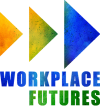The Information Age has seen us embrace technology and the resulting data – collecting it, analysing it and converting it (with greater or lesser success) into strategies and decisions that deliver real benefits. In part, this is why the era we are currently living in is defined as the ‘Information Age’.
In facilities management, for several years the discussion has been around the opportunities that the power of technology offers to change much of what we do for the better – more of the right information faster, more insight into problems and solutions, more efficient use of resources, better outcomes, better personal experiences.
Technology that already exists, appropriately specified and integrated, gives us the power to provide workplaces that meet the need for a better experience for users in an environment that is efficient, cost-effective and supportive of sustainability goals. But what’s often missing before the Information Age can deliver on its full promise is that top-level strategy, the integration of all elements into a single system that provides a coherent, comprehensive source of accurate, usable information – one truth in one place, with easily defined ways to respond to it.
But, of course, not every organisation moves at the same pace, whether client or service provider. There’s the issue of change itself, which is not always easy. There may be issues around costs of implementing new technologies, even if only in the short-term; and in many cases there may be a need for new skills to successfully deploy and manage new systems. Probably the greatest challenge, however, is simply to understand – to understand what a particular piece of new technology means, what it offers, what its real benefits and costs might be, whether it is the right choice for a particular situation.
Workplace Futures 2023 brought together a strong panel of speakers to offer valuable, knowledgeable, practical information and insights – from the big trends in the technology world, the commercial world and into FM, through current challenges and opportunities, to case studies of implementation and successful outcomes.
